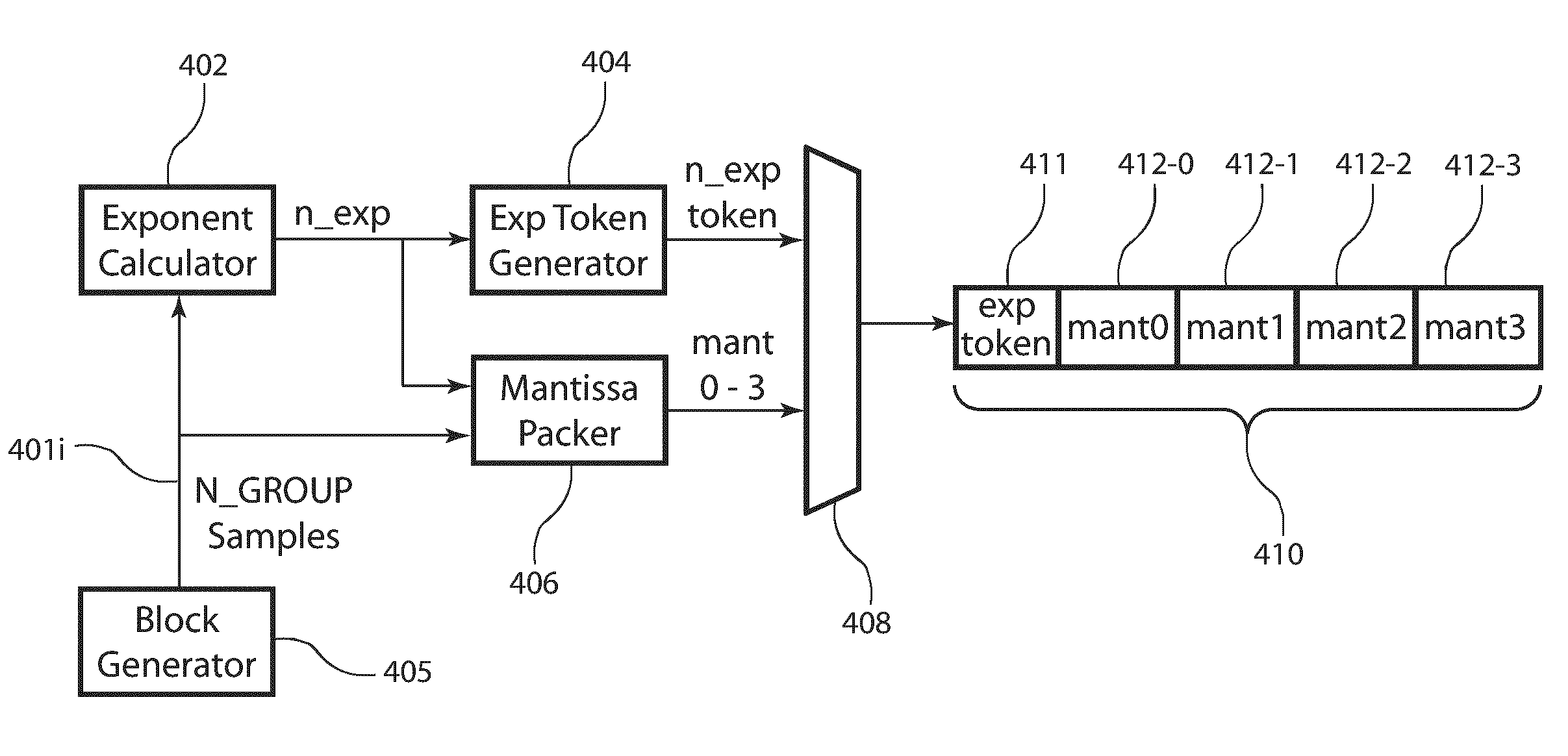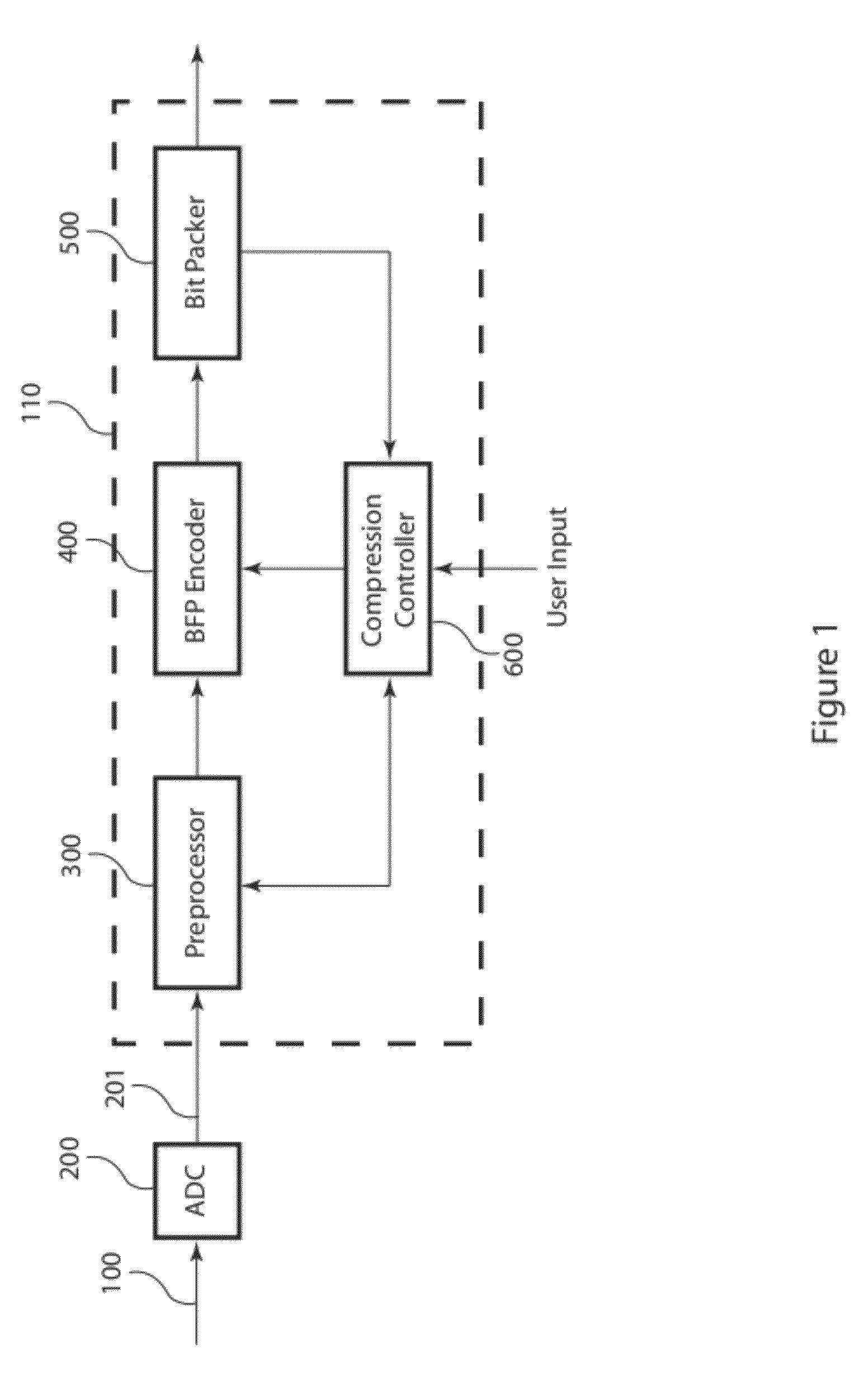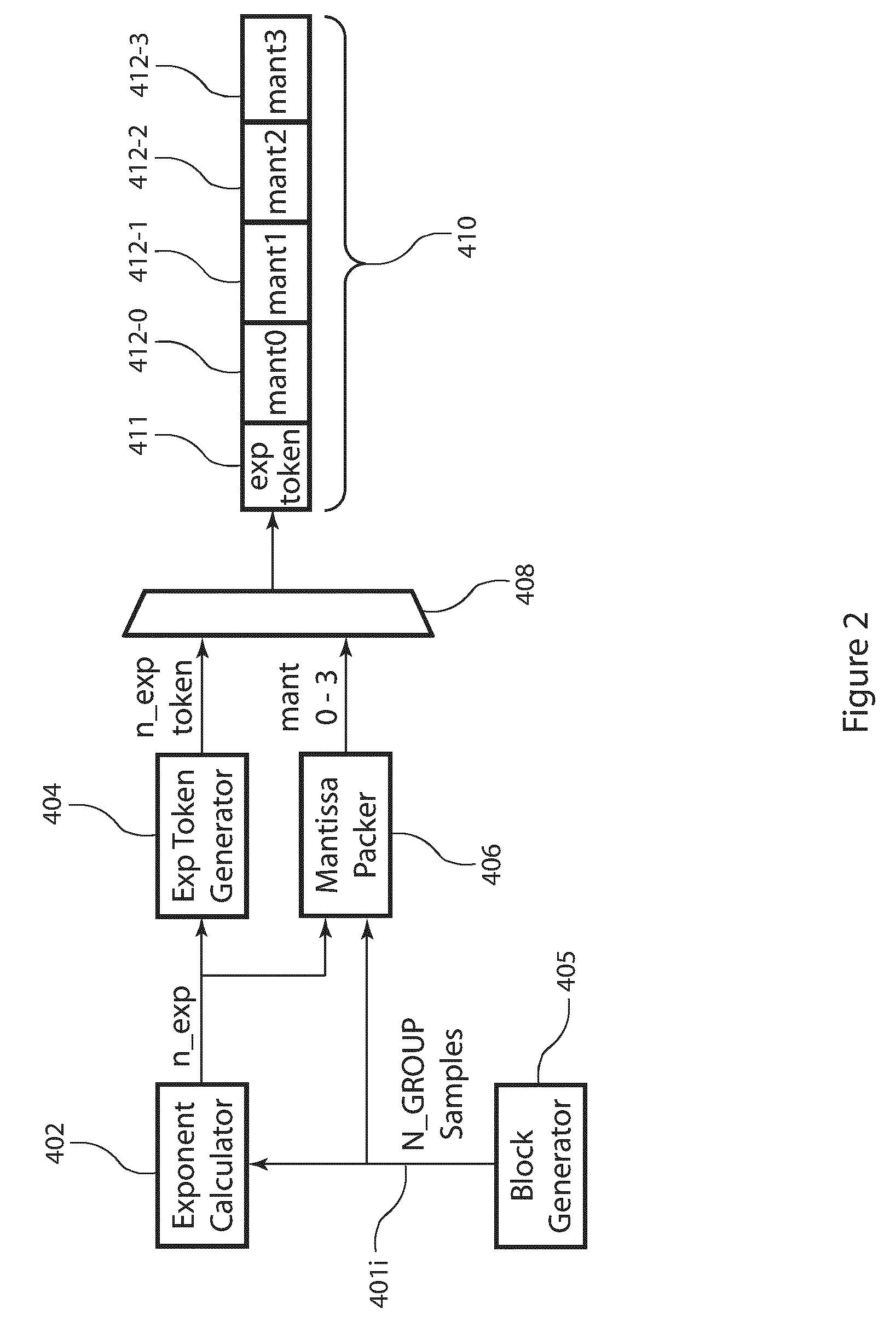Block floating point compression of signal data
a signal data and block floating point compression technology, applied in the field of compression and decompression of signal data, can solve the problem that the compression of signal data reduces the data storage capacity requirements, and achieve the effect of enhancing the block floating point compression of sampled signal data
- Summary
- Abstract
- Description
- Claims
- Application Information
AI Technical Summary
Benefits of technology
Problems solved by technology
Method used
Image
Examples
Embodiment Construction
[0061]FIG. 1 is a block diagram of a signal processing system that compresses signal samples using block floating point encoding. The analog to digital converter (ADC) 200 converts an input analog signal 100 to a sampled signal 201 at a sample rate and number of bits per sample. The compressor 110 is applied to the sampled signal 201 to produce compressed samples. An optional preprocessor 300 may perform various operations on the sampled signal 201 for the particular application or to increase compression performance. The optional preprocessor 300 may provide operations such as signal conditioning, filtering, temporal or spatial windowing and scaling. To increase compression performance in some applications, the preprocessor 300 may include a derivative operator, as described in the '100 patent. Derivatives decrease the magnitude of the samples as long as the signal is at or near baseband (DC). Derivatives actually increase the magnitude of samples when the signal's center frequency...
PUM
 Login to View More
Login to View More Abstract
Description
Claims
Application Information
 Login to View More
Login to View More - R&D
- Intellectual Property
- Life Sciences
- Materials
- Tech Scout
- Unparalleled Data Quality
- Higher Quality Content
- 60% Fewer Hallucinations
Browse by: Latest US Patents, China's latest patents, Technical Efficacy Thesaurus, Application Domain, Technology Topic, Popular Technical Reports.
© 2025 PatSnap. All rights reserved.Legal|Privacy policy|Modern Slavery Act Transparency Statement|Sitemap|About US| Contact US: help@patsnap.com



